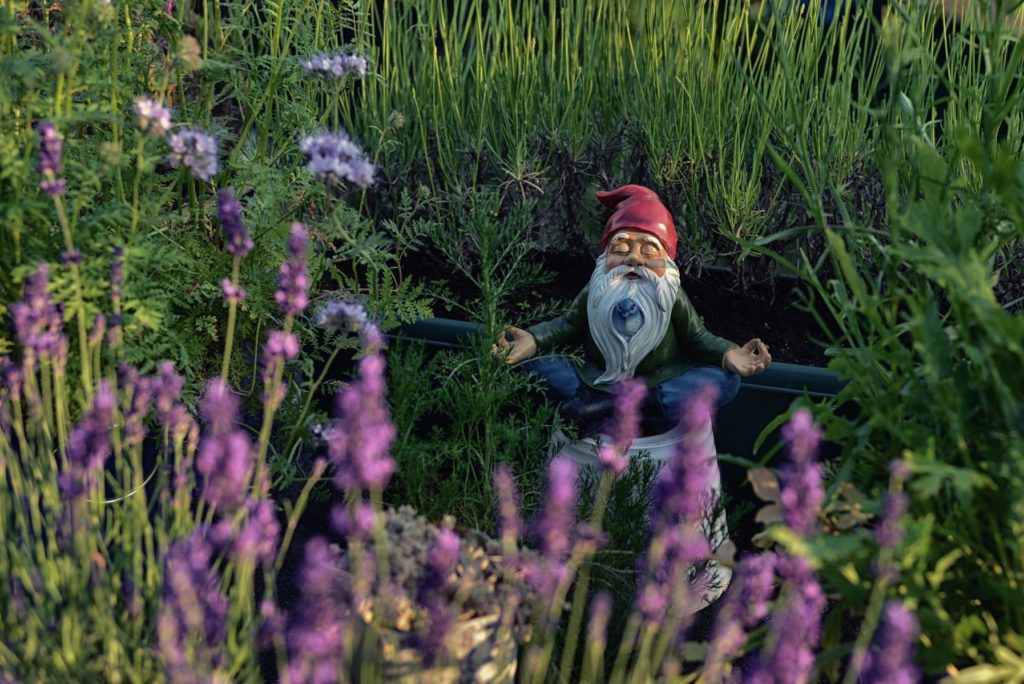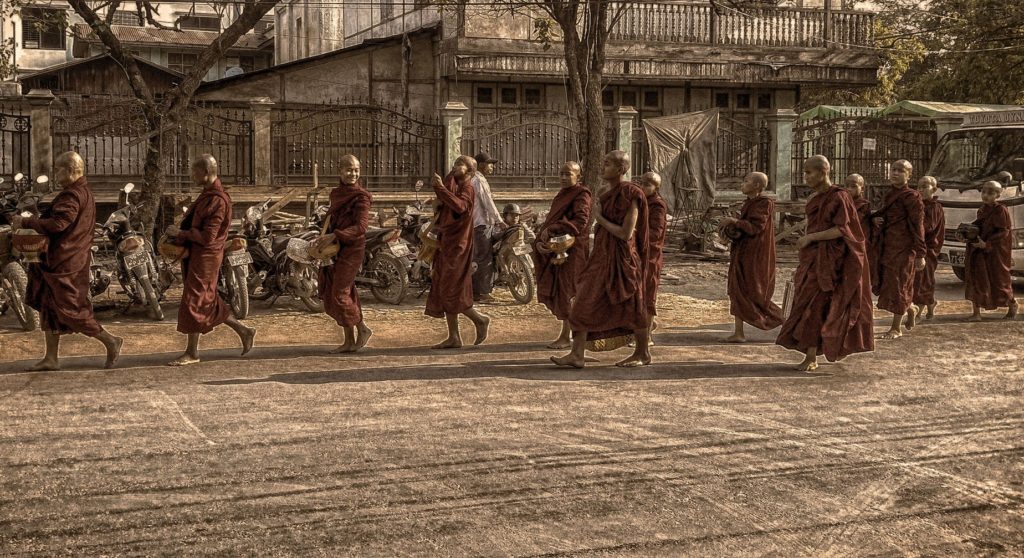If you have fallen out of the habit of meditating, maybe it is time that you got back into it.
Over the I get people asking the same questions when they learn that I actually meditate along with my yoga.They were either new to meditation, or into yoga and wanted more. But they were stuck, they didn't know where to start.
Questions like: "What method is best for X", "What should I feel like during or after a session?", or "I've meditated in the past but my life has gotten crazy and I haven't meditated for a while, how can I get back into it?"
I wanted to share what I use in terms of tips and my own personal practice that helps me stay consistent and ensure I have the best session possible. So I put together this short guide that walks you through common issues with meditation, an intro to what meditation and mindfulness, and a challenge that will help boost you into starting, improving, and sustaining a practice.
At first you really do want to try and minimize sources of discomfort because you'll have more than enough internal distractions to deal with.
Distractions will make the learning curve a bit steeper.
Meditation centers I've visited tend to keep their room temperature colder than usual. I think this goes along with conservation of resources as well as encouraging practitioners to be rigorous, vigorous, and self-reliant.


 Does yoga equal meditation? Or is meditation a form of yoga?
Yoga is more than stretching.
Yoga has meditative aspects but it isn’t a replacement for meditation.
Yoga, as commonly defined is an 8 fold path to enlightenment. Of those, about 5 involve some sort of meditation. That being said, there are many forms of moving meditation that may work, asana included.
Some use walking meditation as a stepping stone. Hell, some days I make more mental progress doing pause squats than I do sitting down.
It’s easier, for some people, to start with yoga and transition to a seated meditative practice later on.
You see yoga can become like a moving meditation, but the true essence of meditation is obtained through not doing anything, just pure being, pure awareness, the separation of mind and consciousness. There are eight limbs of yoga, and the practice of asanas is only the third one, with the seventh being meditative absorption, and the eighth being integration. All of the limbs are important in order to achieve the last one. As for the benefits of yoga, the only way to truly experience them is to create your own personal daily practice, just like with meditation.
I meditate for 30 minutes alone in a quiet place, and it often takes 5-15 minutes to go into a deep relaxed state, a state I’ve never come close to achieving through yoga.
I tend to view yoga as a preparation for meditation. I have some back issues and am not able to sit comfortably until after yoga. So I do 15 minutes yoga, 30 minutes meditation, 15 minutes yoga. It also helps me focus my attention for meditation after all the multitasking I do at work.
The goal of asana practice is to prepare the body for mediation.
Does yoga equal meditation? Or is meditation a form of yoga?
Yoga is more than stretching.
Yoga has meditative aspects but it isn’t a replacement for meditation.
Yoga, as commonly defined is an 8 fold path to enlightenment. Of those, about 5 involve some sort of meditation. That being said, there are many forms of moving meditation that may work, asana included.
Some use walking meditation as a stepping stone. Hell, some days I make more mental progress doing pause squats than I do sitting down.
It’s easier, for some people, to start with yoga and transition to a seated meditative practice later on.
You see yoga can become like a moving meditation, but the true essence of meditation is obtained through not doing anything, just pure being, pure awareness, the separation of mind and consciousness. There are eight limbs of yoga, and the practice of asanas is only the third one, with the seventh being meditative absorption, and the eighth being integration. All of the limbs are important in order to achieve the last one. As for the benefits of yoga, the only way to truly experience them is to create your own personal daily practice, just like with meditation.
I meditate for 30 minutes alone in a quiet place, and it often takes 5-15 minutes to go into a deep relaxed state, a state I’ve never come close to achieving through yoga.
I tend to view yoga as a preparation for meditation. I have some back issues and am not able to sit comfortably until after yoga. So I do 15 minutes yoga, 30 minutes meditation, 15 minutes yoga. It also helps me focus my attention for meditation after all the multitasking I do at work.
The goal of asana practice is to prepare the body for mediation.  Our busy lives and schedules are not who we are.
There’s a proverb that says “You should sit in meditation for twenty minutes every day – unless you’re too busy. Then you should sit for an hour.” I know it’s unrealistic that you might have the hour every day, but if ten minutes isn’t giving you much progress, try to start your day with 20-30 mins a few times a week.
It’s also easier to mediate for longer in the mornings because the “too tired”, excuses that we might use are easier to avoid.
Meditating before sleep is not recommended, unless you are doing some sort of guided meditation to get you into a relaxed state and ready for sleep. Most meditation is to practice being mindful or alert, and sleeping right after doesn’t give you the most relaxing sleep.
WHile meditating before the night is not good. I’ve heard that it is normal when you’re first starting out to get drowsy, but that this goes away with practice. It is even the first stage in learning to meditate according to
Our busy lives and schedules are not who we are.
There’s a proverb that says “You should sit in meditation for twenty minutes every day – unless you’re too busy. Then you should sit for an hour.” I know it’s unrealistic that you might have the hour every day, but if ten minutes isn’t giving you much progress, try to start your day with 20-30 mins a few times a week.
It’s also easier to mediate for longer in the mornings because the “too tired”, excuses that we might use are easier to avoid.
Meditating before sleep is not recommended, unless you are doing some sort of guided meditation to get you into a relaxed state and ready for sleep. Most meditation is to practice being mindful or alert, and sleeping right after doesn’t give you the most relaxing sleep.
WHile meditating before the night is not good. I’ve heard that it is normal when you’re first starting out to get drowsy, but that this goes away with practice. It is even the first stage in learning to meditate according to  Like that you do not need to sped long stretches of time meditating and becoming frustrated when it feels like you are not making progress. Even 20 seconds or even 5 secs at a time, but the key here is doing it many times.
This isn’t a real substitute for longer meditation sessions but it helps quite a bit to get a hang on starting, and above all it helps a lot to develop “presence” of mind.
It’s definitely helpful especially if you work in front of a screen all day long. The reason is because that can produce a nasty state of mind, one which almost erases the effects of meditation. I use it during the day while I am at work in short bursts to refocus. When I am getting drained I will do it. Sometimes without even realizing it. Basically I don’t have any excuse how to do it, I need to practice not to do it. At least all of the time.
Especially during my commute.
Some preach long sessions only, they see them as the only way to go but then again, start small. Its better being consistent than pushing for long seshions and ending up being unmotivated to sit for 30 min each time.
My bottomline view is that it is important to do shorter sessions.
Even if you don’t get the full benefit.
Sit 5 minutes, even less if that is too much. Start from there and as you progress you might wanna do longer periods.
Like that you do not need to sped long stretches of time meditating and becoming frustrated when it feels like you are not making progress. Even 20 seconds or even 5 secs at a time, but the key here is doing it many times.
This isn’t a real substitute for longer meditation sessions but it helps quite a bit to get a hang on starting, and above all it helps a lot to develop “presence” of mind.
It’s definitely helpful especially if you work in front of a screen all day long. The reason is because that can produce a nasty state of mind, one which almost erases the effects of meditation. I use it during the day while I am at work in short bursts to refocus. When I am getting drained I will do it. Sometimes without even realizing it. Basically I don’t have any excuse how to do it, I need to practice not to do it. At least all of the time.
Especially during my commute.
Some preach long sessions only, they see them as the only way to go but then again, start small. Its better being consistent than pushing for long seshions and ending up being unmotivated to sit for 30 min each time.
My bottomline view is that it is important to do shorter sessions.
Even if you don’t get the full benefit.
Sit 5 minutes, even less if that is too much. Start from there and as you progress you might wanna do longer periods.  What I think we need to consider is that the idea that guided meditations are untested Western inventions, and perhaps have little to do with a proper meditation practice.
Guided meditations are a recent invention.
They are a useful device, and certainly help maintain interest in meditation, but they are training wheels at best.
On the one hand, modern experimentation is great and to be encouraged – biofeedback, apps, online teachings and the like.
On the other, it’s important to be on the lookout for sham meditation – often via CDs and mp3s – being used to make money for people who have very little interest in our long term well being.
Meditate without any guide as soon as possible.
At some point you had to learn walking without someone holding your hand too.
What I think we need to consider is that the idea that guided meditations are untested Western inventions, and perhaps have little to do with a proper meditation practice.
Guided meditations are a recent invention.
They are a useful device, and certainly help maintain interest in meditation, but they are training wheels at best.
On the one hand, modern experimentation is great and to be encouraged – biofeedback, apps, online teachings and the like.
On the other, it’s important to be on the lookout for sham meditation – often via CDs and mp3s – being used to make money for people who have very little interest in our long term well being.
Meditate without any guide as soon as possible.
At some point you had to learn walking without someone holding your hand too.  Meditation in the West tends to come from the Buddhist, not Hindi traditions and as such has a much more focused spirituality.
When I started I was clumsily referring to ‘yoga’ as practiced in the west losing its spirituality there rather than meditation, and meditation in the context of traditional Hindu yoga practice being a part of yoga that the west largely ignores.
I don’t know Hinduism in any great detail, though even buddhism in the west has been popularly co-opted by materialist secularism as the mindfulness movement – not necessarily a bad thing, but I think we have a lot to discover that our skeptical, over-rational minds have long dismissed.
Some systems of Buddhism are more focused on logic and things that are more easily provable. That can make it easier to remove the spirituality from Buddhist meditation and turn it into generic “mindfulness”.
Yoga is the cessation of the mind fluctuations.
What people call yoga in the west isn’t even technically yoga. When we say we are going to do yoga, usually what we mean is that we are going to practice asanas. Exercise. Asanas is the physical conditioning aspect in the Yoga system.
Yoga is generally focused on methods, not ideologies.
That’s why hatha (“gym”) yoga works whether you understand it or not. The theories that yoga is based on have nothing to do with Western science, yet studies show that yoga is very effective.
From Patanjali’s sutras.
Meditation in the West tends to come from the Buddhist, not Hindi traditions and as such has a much more focused spirituality.
When I started I was clumsily referring to ‘yoga’ as practiced in the west losing its spirituality there rather than meditation, and meditation in the context of traditional Hindu yoga practice being a part of yoga that the west largely ignores.
I don’t know Hinduism in any great detail, though even buddhism in the west has been popularly co-opted by materialist secularism as the mindfulness movement – not necessarily a bad thing, but I think we have a lot to discover that our skeptical, over-rational minds have long dismissed.
Some systems of Buddhism are more focused on logic and things that are more easily provable. That can make it easier to remove the spirituality from Buddhist meditation and turn it into generic “mindfulness”.
Yoga is the cessation of the mind fluctuations.
What people call yoga in the west isn’t even technically yoga. When we say we are going to do yoga, usually what we mean is that we are going to practice asanas. Exercise. Asanas is the physical conditioning aspect in the Yoga system.
Yoga is generally focused on methods, not ideologies.
That’s why hatha (“gym”) yoga works whether you understand it or not. The theories that yoga is based on have nothing to do with Western science, yet studies show that yoga is very effective.
From Patanjali’s sutras.
 This is the de facto definition of yoga but of course it’s up to interpretation because a sutra is a thread of a thought designed to be passed down in an oral tradition.
Yoga meditation tends to have less accessible spirituality for many westerners because it focuses more on esoteric methods such as pranayama and chakras to generate spiritual experiences.
The experiences generated are then their own “proof”.
By the technical definition of yoga, yoga is meditation. Yoga is union. It’s goal is to bring about union/harmony in the mind, in a literal sense, typically referring to the skill/cohesiveness of ones concentration.
Hinduism is what the British empire labeled the myriad of spiritual practices they found in India.
I have heard there are millions of god’s and goddesses in India because originally you could create a god from anything you chose to worship. People miss the point that everything contains the ultimate source.
It’s the Western world that needs to label the world around them. There is a lot of spirituality found in India but you won’t find a central definition or establishment like other religions of the world. What is more apt to call Hinduism is Sanatana Dharma which is Sanskrit for Eternal Natural Way. It’s not a label is a vague definition because there isn’t one right or wrong way to reach an enlightened state.
Ancient Hinduism originally known as Sanatana Dharma is the oldest religion on Earth.
This is the de facto definition of yoga but of course it’s up to interpretation because a sutra is a thread of a thought designed to be passed down in an oral tradition.
Yoga meditation tends to have less accessible spirituality for many westerners because it focuses more on esoteric methods such as pranayama and chakras to generate spiritual experiences.
The experiences generated are then their own “proof”.
By the technical definition of yoga, yoga is meditation. Yoga is union. It’s goal is to bring about union/harmony in the mind, in a literal sense, typically referring to the skill/cohesiveness of ones concentration.
Hinduism is what the British empire labeled the myriad of spiritual practices they found in India.
I have heard there are millions of god’s and goddesses in India because originally you could create a god from anything you chose to worship. People miss the point that everything contains the ultimate source.
It’s the Western world that needs to label the world around them. There is a lot of spirituality found in India but you won’t find a central definition or establishment like other religions of the world. What is more apt to call Hinduism is Sanatana Dharma which is Sanskrit for Eternal Natural Way. It’s not a label is a vague definition because there isn’t one right or wrong way to reach an enlightened state.
Ancient Hinduism originally known as Sanatana Dharma is the oldest religion on Earth.  The biggest thing it has given me is that most of the time I can turn off most thought pretty easily. The peace and quiet is nice, and it helps me think better when I actually need to. The brain is part muscle just like any other body part. It took me a lot of regular meditation to really hone it down.
I started mediating two years ago and have been meditating off and on since then. When I first started I couldn’t close my eyes in a dark room for more than a few minutes, I thought something was going to come for me, I was a frightened and very paranoid person. For me this was the manifestation of my anxiety. The distance from my family and friends and the fact that I was alone came out when the lights were off.
It’s the first time I’ve ever observed my brain in action.
Since that time meditation has helped grow tremendously and made me realize where a lot of my misguided emotions were coming from.
It has brought me into a better place in my life. Meditation provides a much needed time for self-reflection.
Whether it was always pursuing a romantic relationship in an effort to replace a perceived void left by the absence of a parent’s affection or letting others take advantage of me emotionally.
In today’s world where we’re being pulled a hundred different ways, it’s nice to have some time to sit down and listen what’s going on within ourselves. It’s not all peaches and roses though.
I have bad days.
Even then, the skills you gain through meditation should help you there. Be aware of your emotions and thoughts, but try not to attach to them nor reject them.
The biggest thing it has given me is that most of the time I can turn off most thought pretty easily. The peace and quiet is nice, and it helps me think better when I actually need to. The brain is part muscle just like any other body part. It took me a lot of regular meditation to really hone it down.
I started mediating two years ago and have been meditating off and on since then. When I first started I couldn’t close my eyes in a dark room for more than a few minutes, I thought something was going to come for me, I was a frightened and very paranoid person. For me this was the manifestation of my anxiety. The distance from my family and friends and the fact that I was alone came out when the lights were off.
It’s the first time I’ve ever observed my brain in action.
Since that time meditation has helped grow tremendously and made me realize where a lot of my misguided emotions were coming from.
It has brought me into a better place in my life. Meditation provides a much needed time for self-reflection.
Whether it was always pursuing a romantic relationship in an effort to replace a perceived void left by the absence of a parent’s affection or letting others take advantage of me emotionally.
In today’s world where we’re being pulled a hundred different ways, it’s nice to have some time to sit down and listen what’s going on within ourselves. It’s not all peaches and roses though.
I have bad days.
Even then, the skills you gain through meditation should help you there. Be aware of your emotions and thoughts, but try not to attach to them nor reject them.